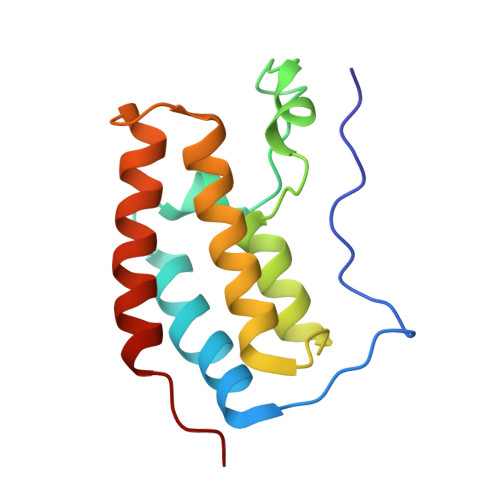Optimization of 3,5-dimethylisoxazole derivatives as potent bromodomain ligands.
Hewings, D.S., Fedorov, O., Filippakopoulos, P., Martin, S., Picaud, S., Tumber, A., Wells, C., Olcina, M.M., Freeman, K., Gill, A., Ritchie, A.J., Sheppard, D.W., Russell, A.J., Hammond, E.M., Knapp, S., Brennan, P.E., Conway, S.J.(2013) J Med Chem 56: 3217-3227
- PubMed: 23517011
- DOI: https://doi.org/10.1021/jm301588r
- Primary Citation of Related Structures:
4J0R, 4J0S - PubMed Abstract:
The bromodomain protein module, which binds to acetylated lysine, is emerging as an important epigenetic therapeutic target. We report the structure-guided optimization of 3,5-dimethylisoxazole derivatives to develop potent inhibitors of the BET (bromodomain and extra terminal domain) bromodomain family with good ligand efficiency. X-ray crystal structures of the most potent compounds reveal key interactions required for high affinity at BRD4(1). Cellular studies demonstrate that the phenol and acetate derivatives of the lead compounds showed strong antiproliferative effects on MV4;11 acute myeloid leukemia cells, as shown for other BET bromodomain inhibitors and genetic BRD4 knockdown, whereas the reported compounds showed no general cytotoxicity in other cancer cell lines tested.
Organizational Affiliation:
Department of Chemistry, Chemistry Research Laboratory, University of Oxford, Mansfield Road, Oxford, OX1 3TA, UK.

















